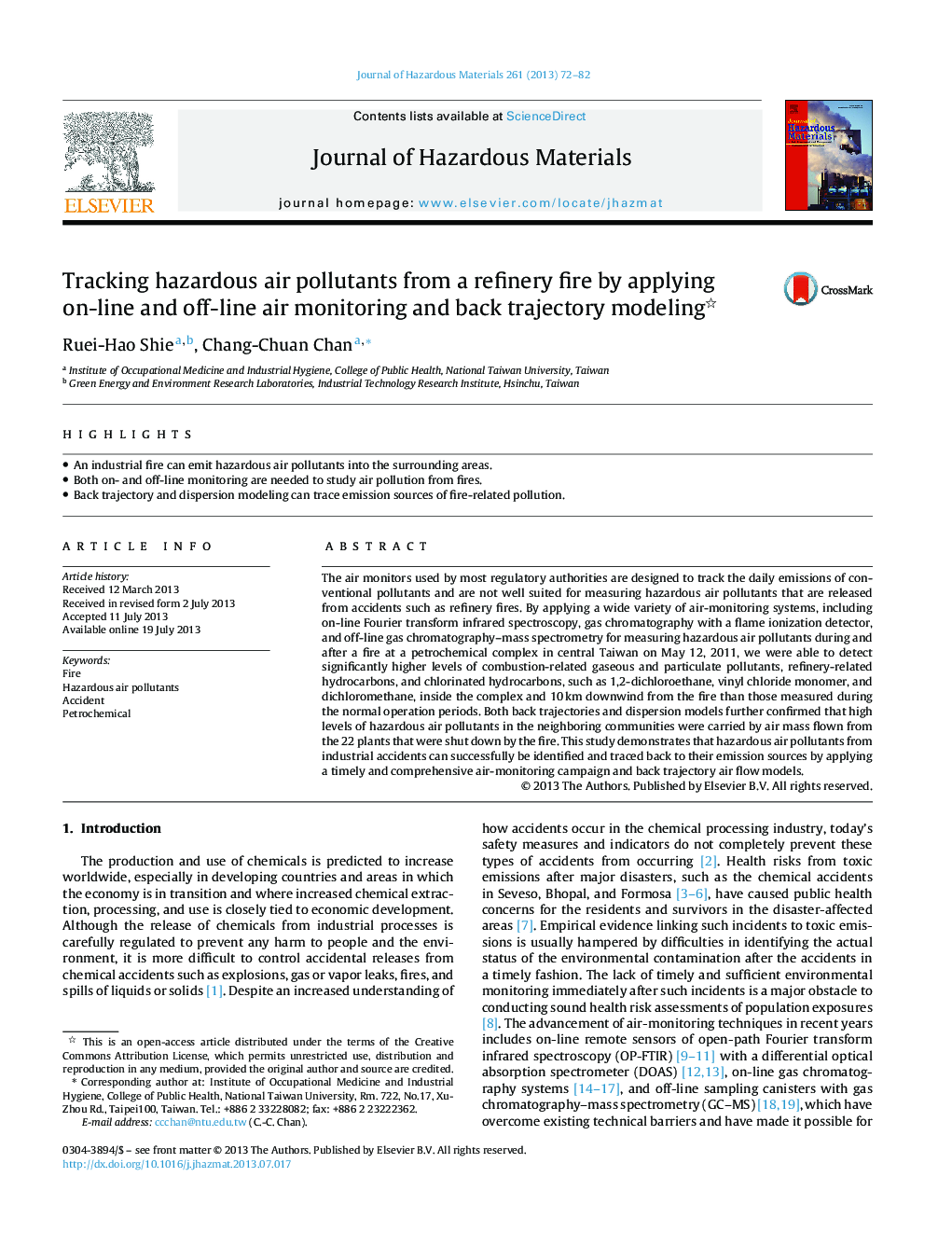| Article ID | Journal | Published Year | Pages | File Type |
|---|---|---|---|---|
| 6971773 | Journal of Hazardous Materials | 2013 | 11 Pages |
Abstract
The air monitors used by most regulatory authorities are designed to track the daily emissions of conventional pollutants and are not well suited for measuring hazardous air pollutants that are released from accidents such as refinery fires. By applying a wide variety of air-monitoring systems, including on-line Fourier transform infrared spectroscopy, gas chromatography with a flame ionization detector, and off-line gas chromatography-mass spectrometry for measuring hazardous air pollutants during and after a fire at a petrochemical complex in central Taiwan on May 12, 2011, we were able to detect significantly higher levels of combustion-related gaseous and particulate pollutants, refinery-related hydrocarbons, and chlorinated hydrocarbons, such as 1,2-dichloroethane, vinyl chloride monomer, and dichloromethane, inside the complex and 10Â km downwind from the fire than those measured during the normal operation periods. Both back trajectories and dispersion models further confirmed that high levels of hazardous air pollutants in the neighboring communities were carried by air mass flown from the 22 plants that were shut down by the fire. This study demonstrates that hazardous air pollutants from industrial accidents can successfully be identified and traced back to their emission sources by applying a timely and comprehensive air-monitoring campaign and back trajectory air flow models.
Related Topics
Physical Sciences and Engineering
Chemical Engineering
Chemical Health and Safety
Authors
Ruei-Hao Shie, Chang-Chuan Chan,
